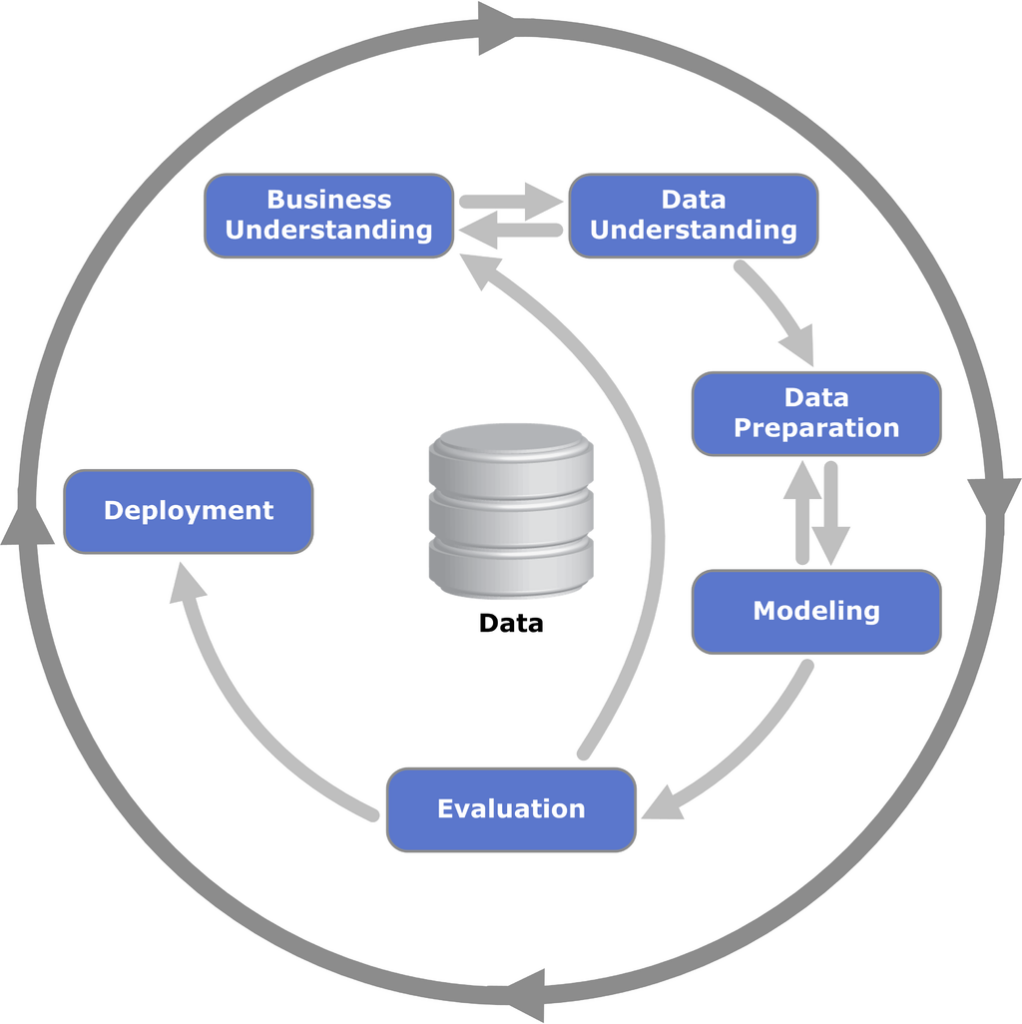All about CRISP – DM
Cyclic way for data analytics processes.

CRISP-DM stands for Cross Industry Standard Process for Data Mining. It’s a widely used framework in the field of data analysis and data mining, providing a structured approach to guide professionals through the stages of a data-centric project. Here’s a brief overview of the six main stages within the CRISP-DM process:
- Business Understanding: This initial phase involves understanding the project objectives, requirements, and goals from a business perspective. It’s crucial to define the problem, identify the opportunities, and establish clear objectives for the data analysis project.
- Data Understanding: Here, data collection and exploration take place. It involves acquiring the necessary data for analysis, assessing its quality, understanding its structure, and gaining insights into the variables. This stage helps in identifying potential issues and deciding which data is relevant for the analysis.
- Data Preparation: Once the data is collected, it needs to be cleaned, transformed, and pre-processed. This stage involves cleaning data by handling missing values, outliers, and inconsistencies. Data is formatted and transformed to make it suitable for analysis, which may include normalization, aggregation, or feature engineering.
- Modeling: In this stage, various modeling techniques are applied to the prepared dataset to address the business problem. This involves selecting appropriate algorithms, building models, and evaluating their performance against predefined criteria. Iterative refinement may occur to improve model accuracy.
- Evaluation: Models developed in the previous stage are evaluated to ensure they meet the business objectives. Performance metrics are used to assess the models’ effectiveness. This phase helps in selecting the best-performing model for deployment.
- Deployment: The final stage involves deploying the chosen model into the operational environment. This could involve implementing the model into production, monitoring its performance, and creating a plan for ongoing maintenance.
Some key advantages of using the CRISP-DM process for data analysis:
- Structured Approach: Offers a well-defined structure with clear stages, ensuring a systematic and organized workflow throughout the project.
- Flexibility: Allows flexibility in navigating back and forth between stages, accommodating changes or new insights without disrupting the entire process.
- Business Focus: Prioritizes understanding the business problem, ensuring that data analysis aligns with business objectives, thus delivering more relevant and impactful insights.
- Iterative Nature: Encourages an iterative approach, promoting continuous improvement and refinement, leading to better models and results.
- Comprehensive: Covers a wide range of activities, including data collection, cleaning, modeling, evaluation, and deployment, providing a comprehensive framework for data analysis projects.
- Enhanced Communication: Facilitates better communication among stakeholders, as it offers a common language and structure for discussing project progress and outcomes.
- Risk Management: Helps in identifying and mitigating potential risks early in the project lifecycle, reducing the likelihood of errors or failures in later stages.
- Reuse of Knowledge: Encourages documentation and knowledge sharing, allowing organizations to leverage insights and best practices for future projects, fostering continuous learning and improvement.
While CRISP-DM provides a robust framework, it does have some limitations:
- Resource Intensive: The process can be time-consuming and resource-intensive, especially in the early stages that involve extensive data understanding and preparation.
- Rigidity in Sequence: While it allows for iteration, the sequential nature of the process might not accommodate certain agile or rapidly changing project requirements.
- Dependency on Data Quality: The effectiveness of the analysis heavily relies on the quality of available data. If data is incomplete, inconsistent, or of poor quality, it can hinder progress.
- Scope of Business Understanding: Sometimes, defining the business problem precisely at the start of the project might be challenging, leading to potential misalignment between data analysis and business objectives.
- Lack of Emphasis on Creativity: The structured nature might restrict creative exploration or unconventional approaches that could potentially yield valuable insights.
- Not Ideal for All Projects: It might not be suitable for smaller-scale projects or projects where the problem statement is not well-defined or the data is limited.
Ankit Goyal © 2024